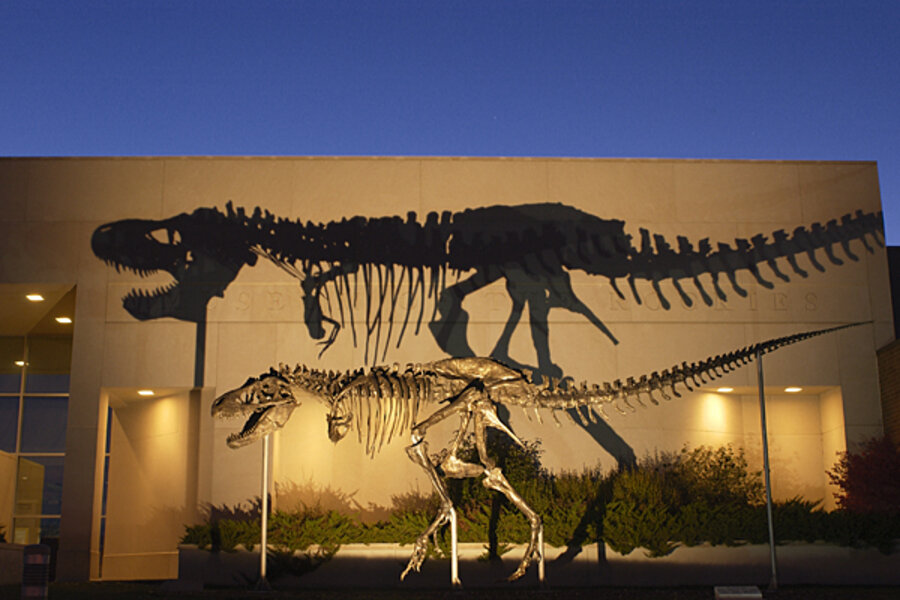Tyrannosaurus rex heading to Washington, D.C.
Loading...
The Smithsonian's National Museum of Natural History in Washington, D.C., easily ranks among the most celebrated collections of interesting stuff. The world's most-visited museum of its kind, it is home to more than 126 million specimens of plants, animals, rocks, and human cultural artifacts.
But amid all the museum's curios – the meteorites, the butterflies, the mummies, the tarantulas, and that huge whale suspended from the ceiling – there is one glaring omission: No Tyrannosaurus rex.
This is about to change. In October, a 66 million-year-old, 38-foot-long, 7-ton, 85-percent-complete skeleton of the Cretaceous period's apex predator is set to arrive at the nation's capital.
Unearthed in 1988 in a wildlife refuge by Montana rancher Kathy Wankel, the so-called "Wankel T. Rex," was at the time of its discovery the largest and most complete Tyrannosaurus rex skeleton ever found.
The Wankel T. Rex was discovered on federal land, so it is property of the Army Corps of Engineers. Since 1990, it has been on display at the Museum of the Rockies, which now has a second T. rex skeleton that is set to go on display next year. The Corps of Engineers is lending the Wankel T. Rex to the Smithsonian for 50 years.
The Wankel T. Rex is scheduled to go on temporary display on October 16 – National Fossil Day. After that, the museum's dinosaur hall will close for a major renovation. When it reopens in 2019, the skeleton will be the hall's centerpiece.
“If you've ever stood next to a real T. rex skull, you'll realize what a breathtaking thing it is: four feet long, with teeth the size of bananas,” Kirk Johnson, the museum's director and a paleontologist told Smithsonian Magazine. “It is the most terrifying carnivore that's ever lived on the planet. And it really makes you ponder what life would have been like with these things prowling the North American landscape.”








